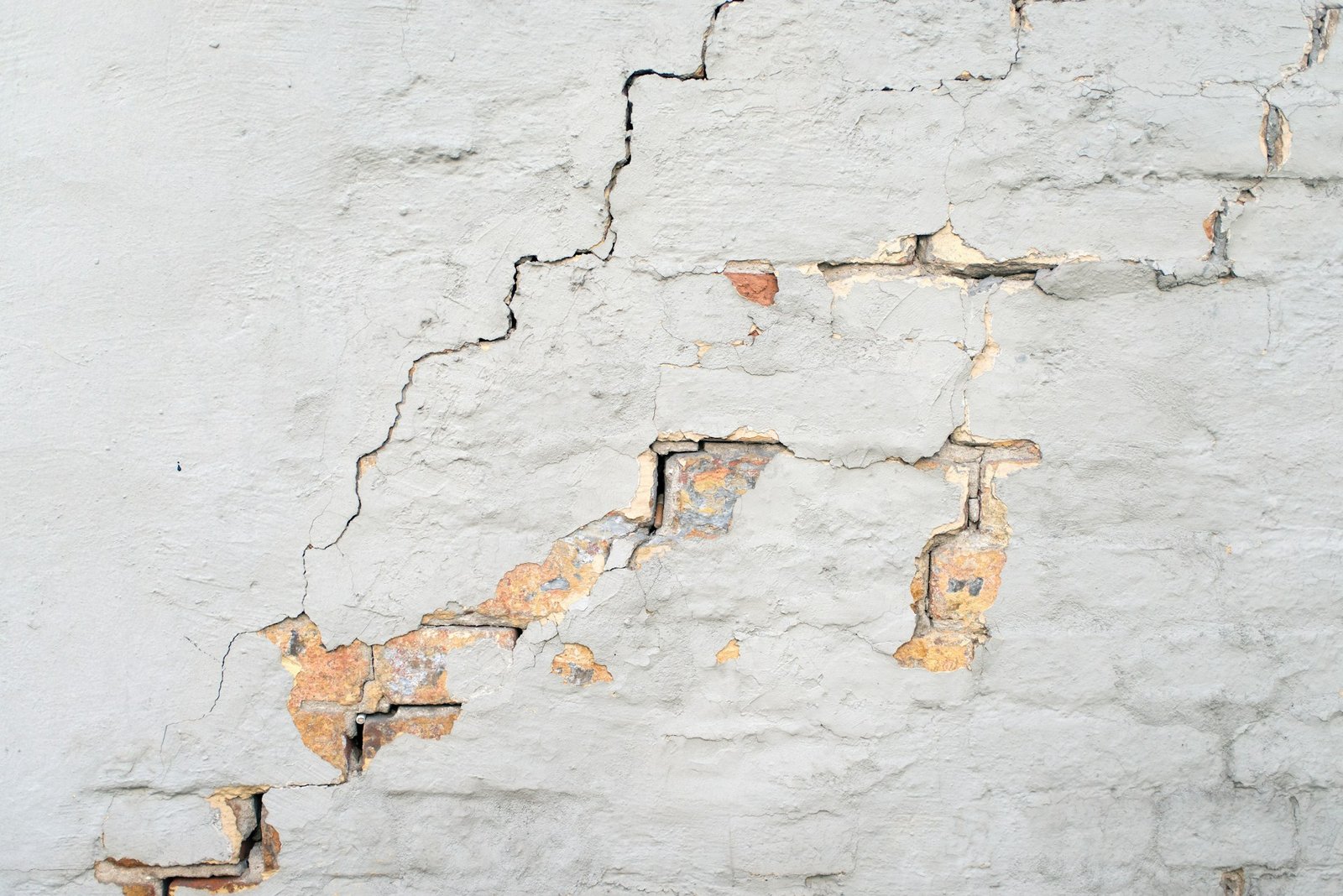Small cracks can be harmless…or they can be your house whispering that something’s moving. The fastest way to know the difference is to track them like a pro: quick visual checks, baseline photos with a scale, and simple gauges that show real movement. Follow the steps below and you’ll have trustworthy data—not guesswork—to decide when a crack needs only touch-up or a pro’s eyes.
Spot cosmetic vs active cracks with simple checks
Start with a clean look so you’re not fooled by dust lines.
1) Wipe the crack and the surrounding area with a dry cloth.
2) Stick a small piece of painter’s tape above the crack and write today’s date and a simple ID (e.g., “LR-1” for living room).
3) Use a crack width ruler card (Plastic Crack Width Gauge Card: Get one Here)or a feeler gauge set Get one Here to measure the widest point—note it in millimeters and inches. This matters because an accurate starting width is the baseline you’ll compare against later.
Check the crack’s pattern and location.
1) Hairline, straight cracks in drywall near door or window corners often come from normal seasonal movement.
2) Stair-step cracks in brick or block, or diagonal cracks running from the top corners of doors/windows, can indicate foundation movement.
3) Look for displacement: place a small torpedo level or even a credit card across the crack—if one side sits higher, that’s a red flag. These pattern checks help separate “cosmetic” from “possibly structural.”
Look for fresh clues.
1) Gently rub your finger—if you get fresh chalky dust inside the crack, it may be active.
2) Watch for water staining or dampness (a moisture meter helps: Get this One).
3) Note related symptoms: new door sticking, new window gaps, or sloped floors. Red flags worth fast-tracking: width greater than 1/8 in (3 mm), visible offset, rapid change after heavy rain, or step/diagonal cracks in masonry.
Take baseline photos with a ruler or coin scale
Gather simple gear:
1) Your phone,
2) a rigid 6-inch steel ruler with mm markings Like This One or a crack-width card,
3) painter’s tape, Get it here,and a fine-tip marker and
4) Optional phone tripod for consistency. Tape your date/ID label just above the crack and place the ruler or a coin (e.g., a quarter) beside the crack so it appears in every photo. The scale gives you the true size in the image, which is essential for later comparisons.
Take the shot the same way every time.
1) Turn on your camera’s grid lines and hold the phone square to the wall so vertical lines look vertical (avoid tilting).
2) Stand 12–18 inches from the surface so the crack and scale fill most of the frame.
3) Use the same lighting each time—turn on a lamp or use the phone’s light if needed—and lock focus/exposure if your phone allows. This consistent technique removes angle and light tricks that can make a crack look bigger or smaller than it is.
File your photos so you can actually use them.
1) Create a folder like “House_Crack_Monitoring.”
2) Rename photos with date and ID (e.g., “2025-05-20_LR-1.jpg”).
3) Keep a simple log (paper or spreadsheet) that records room, crack ID, measured width, and notes (e.g., “heavy rain last week”). Organized photos + notes turn random snapshots into proof of stability or change.
Measure and log changes; compare weekly photos
Set a weekly routine.
1) Pick the same day/time each week (and also check after heavy rain or freeze-thaw events).
2) At three spots along the crack (top/middle/bottom), measure the width with your crack card or a feeler gauge and record the largest value.
3) Write the new width next to the old number in your log. Regular, repeatable checks catch slow movement you’d otherwise miss.
Match your photos week-to-week.
1) Put a small tape mark on the floor where you stood the first time and measure your distance to the wall with a tape measure or a pre-cut string.
2) Use a phone tripod at the same height, keep the ruler/coin in the frame, and hold the camera square to the wall.
3) Take 2–3 shots in case one blurs. These controlled photos let you compare apples to apples and even overlay images if you want.
Interpret what you see.
1) If change is ≤0.2 mm per month and the crack opens/closes seasonally, it’s often cosmetic.
2) If you record ≥1.0 mm growth in a month, any step/diagonal masonry cracking, visible offset, or new sticking doors/windows, treat it as active movement.
3) Graph the width over time in your spreadsheet; a steadily rising line means it’s time to plan next steps. When in doubt, the trend is more important than any single reading.
Decide next steps: harmless touch-ups or call a pro
If your crack stays stable for 3–6 months (no measurable growth, no offset), go ahead with cosmetic fixes.
For drywall:
1) Lightly V-groove the crack with a utility knife,
2) fill with lightweight joint compound and embed paper or fiberglass tape,
3) sand and paint. A small drywall repair kit, Get it Here, 6-inch taping knife, Get it Here, and fine sanding block, Get it Here, make it easy. For hairlines that reappear seasonally, a paintable, flexible acrylic caulk, Get it Here under paint, can help.
Call a pro—ideally a licensed structural engineer—if any of the following show up in your log or photos:
1) growth ≥0.5 mm per week or ≥1.0 mm per month,
2) step cracks in brick/block,
3) a crack with one side higher than the other,
4) new door/window binding,
5) water intrusion, or
6) wide vertical cracks in the basement that widen toward the top or bottom. Bring your measurements, photos, and notes; this data shortens the diagnostic process and can save you money.
While you wait for an assessment, reduce stress and moisture.
1) Improve drainage: add downspout extensions, like these ones, and ensure soil slopes away from the house.
2) Avoid heavy new loads near suspect areas (e.g., waterbeds, bookcases).
3) Don’t fill an active crack yet—your gauges and photos need to keep working until the pro says fix it. Small, low-cost steps can stabilize conditions and protect your home in the meantime.
Final Words
With a ruler, a phone, and a simple gauge, you can tell a harmless cosmetic crack from one that’s actually moving. Capture a clean baseline, set up a repeatable routine, and watch for trends—not hunches. In a few weeks, you’ll either have the confidence to patch and paint or the proof you need to call a pro, all backed by clear measurements and photos.




